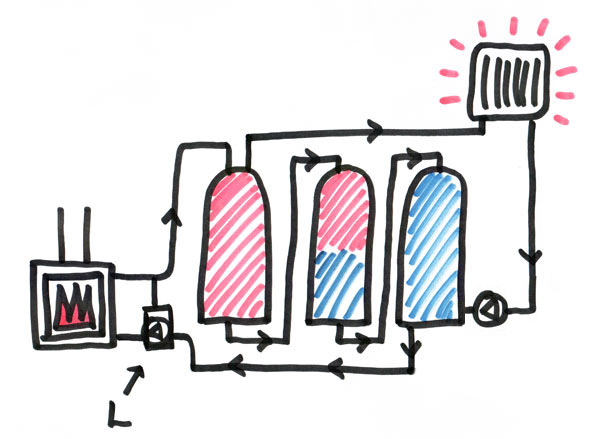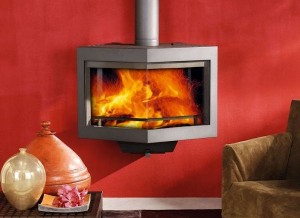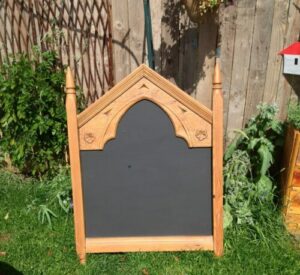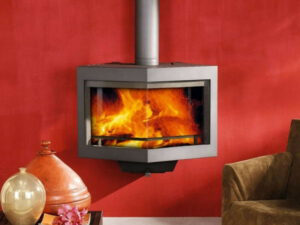How to build a DIY thermal store

A thermal store is used to solve the following problem: you have a wood stove, but in the mornings, by the time you’ve lit it, and the place gets a bit warmer, you’ve left the house. If you close down the stove so that it stays alight all night, that’s a very bad idea as regards pollution, and tar build-up in your chimney, risking a chimney fire. Or maybe you’re in and out of your house all day, but you don’t want to keep the fire going all day – it’s a waste.
The answer is a thermal store. It’s basically a large, extremely-well-insulated storage tank of water that you heat via a back-boiler on your wood stove (or via solar hot water panels), that can feed radiators or underfloor heating any time you like. You can then light your fire in the evening, and it keeps the heat in your thermal store topped up, to use when you like. You can buy thermal stores, but they can be quite expensive. Our friend Sune explains here how (if you’re at all handy) you can make one yourself, from recycled materials. His company sells thermal stores, but hey, he’s just that sort of guy. Here’s Sune…..
I have a farmer mate down the road who runs a little log boiler to heat his place up. Trouble is that he has to keep the boiler running to have any heat and that also means that he is slumber burning a lot of the time which is no good for the boiler or chimney and vastly reduces efficiency. He’d like the convenience of a thermal store, but wants it on the cheap (well, he’s a farmer after all – Dave). We sketched out this idea together for using old copper hot water cylinders. You would need to insulate the tanks better as the standard insulation that they come with is not really up to scratch, but that isn’t rocket science. Just make sure you use something that can take the heat, like glasswool for example. Insulate all the pipework really well too – you will be surprised at how much heat you can lose through a badly-insulated pipe or valve.
So get yourself two or three old copper hot water cylinders – the recycling centre springs to mind, or eBay. Now you need to plumb them together in series as shown in the diagram. That way the heat will spread first down the first tank, then on to the next. If you plumb them in parallel it will take ages for you to get a decent amount of usable heat.
The heat source shown here is a wood boiler stove. As you can see the hot flow from the stove goes into the top of the first tank and the cold return comes back from the base of the last tank.
The water for your heating also comes from the top of the first tank and returns to the base of the last tank but it is important that the flow (or the return) for the heating side of things comes from a different tapping on the tank. There will very likely be an immersion tapping at the top of the first tank which you can use for this. it will be quite big but some cheap steel bushes can be used to reduce its size down so you can fit a standard-sized pipe.
Underfloor heating would be even better here
A load unit (marked L) on the boiler stove will make everything work loads better and ensure that the water getting to the tanks will always be at 60ºC or above. It means you will have usable heat fast. Otherwise the stove has to heat up the water in all the tanks in graduations of around 15ºC which would take ages.
This system is only for the heating side of things, with this setup you would need another tank for your water for washing and bathing. Another option would be something like sourcing an indirect cylinder as the first tank where the hot water for washing and bathing goes into a coil in the tank as cold mains pressure hot water and comes out of the coil hot.
When you are sizing the boiler stove remember that it needs to be able to heat your building AND heat up the water in the tanks so you will need a slightly higher output than if you didn’t have the tanks there.
I have not included any of the safety features you need here, nor given pipe specifications, etc. This is definitely not a schematic for creating a heating system, it is for discussion and information flow.
There are disadvantages to doing it like this, it is not as good as a single, purpose made, thermal store, but it is cheap and relatively easy. There are also lots of other possibilities and permutations.
Sune Nightingale of Stoves Online
The views expressed in our blog are those of the author and not necessarily lowimpact.org's
4 Comments
-
1TB October 10th, 2019
Hi, I would like to build something like this but I think I must misunderstand something. To my mind with the return to the CH via a venturi / injector tee when the stove if off the return water is placed back in to the top of the first tank so heat from the tanks 2 and 3 will no be used. Should the return not be to the bottom of the last tank rather than via the injector tee? i.e the both the flow and return for the central heating should have separate tapping rather than flow OR return having a separate tapping?
-
2Sune Nightingale October 10th, 2019
You’re totally right TB, duhhhh. My error on the drawing, thanks for pointing that out. It’s not just the error you point out either – water would go all over the place with that setup……best get photoshop opened to edit. Thanks. Sune ?
-
3Dave Darby October 21st, 2019
Both – I’ve changed the image now. Thanks
-
4Thomas Brickell October 21st, 2019
Thanks guys. I will post you some updates when everything is hopefully working.




 Summer advice for wood stove owners
Summer advice for wood stove owners
 Upcycling an old frame into a chalk board
Upcycling an old frame into a chalk board
 Wood stoves
Wood stoves


